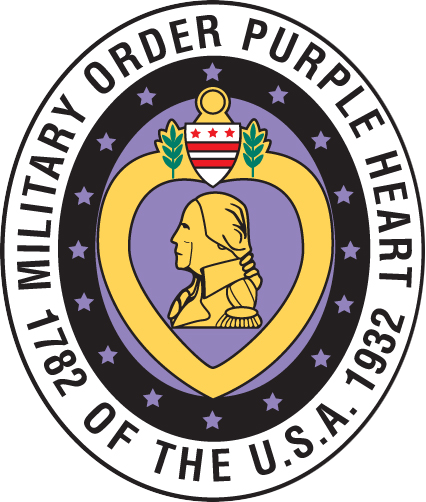John Paul McMahon was born in St. Cloud, Minnesota in 1947. He was the oldest of five children in the McMahon family. He got the first name, John, because his father, a WWII veteran who had been the navigator on a B-17 bomber, had lost his brother John during the war; and his middle name, Paul, was chosen for an uncle on his mothers side, Paul, who had been killed in action during the war. John grew up and attended schools in St. Cloud, and graduated there from Cathedral High School with the Class of 1965.
During his childhood years John had a best friend, Dave Nelson, who also graduated from high school in 1965. At the time, knowing that being drafted for the war in Vietnam was highly likely for young men coming out of high school, the two determined to take advantage of an available enlistment option so they signed up together under the buddy system. That option guaranteed they would serve together through boot camp and initial training. John McMahon and Dave Nelson enlisted in the Marine Corps, were inducted in October 1966, went through boot camp and then another eight weeks in the Infantry Training Regiment (ITR) together at Camp Pendleton, California.
Private McMahon was then sent to Naval Air Technical Training Center Memphis at Millington, Tennessee for advanced individual training as a CH-46 Mechanic. After completing school, he had orders for Vietnam and he arrived there in October 1967 where he was assigned as a Crew Chief to Marine Medium Helicopter Squadron 265 (HMM-265) at Marble Mountain, the Marine helicopter base near Da Nang.
HMM-265 was equipped with 22 medium lift cargo helicopters, CH-46s, commonly called the Sea Knight helicopter, and John was assigned as the Crew Chief of one of those aircraft. Although their buddy system enlistments only promised they would be assigned together during initial training, and John and Dave later received advanced training in different military occupational specialties (MOS), they both were in the same squadron at Marble Mountain, Dave working in avionics while John was a crew chief. As crew chief John was in charge of his aircraft, responsible for all aspects of maintenance and record keeping, when it was grounded he was grounded with it and working until it was flyable again. When it was in the air the crew chief flew with it and manned the .50 cal. machine gun in the right-side door gunner position. John named his CH-46 the Stewball, and as was the custom that name was stenciled on the side of the aircraft.
Eight months after his arrival he sustained wounds that sent him home from the war. During that time Lance Corporal McMahon flew numerous combat missions in Stewball, most in support of Marine ground troops. He was often exposed to enemy fire, understandably so since TET-68 happened during Johns time in Vietnam and it closely coincided with some of the Marines heaviest fighting in Quang Tri Province in what has been known ever since as the battle of Khe Sanh. Today, as he speaks about flying those missions, McMahon says they always flew low level over hostile areas, the aircraft being much harder to target by ground fire when flying at tree-top level. Their standard procedure was for two CH-46s to be dispatched together for mutual security. If one of the Sea Knights were to be disabled in a hostile area the other aircraft was immediately available to extract the crew and continue the mission.
Johns home at Marble Mountain came under enemy ground and rocket attack at various times throughout the war, including during Johns period of service there and he has some pictures of the damage. The fighting in TET-68 began for Marble Mountain when it was hit by 122mm rocket fire on the first day.
LCPL McMahon was wounded June 12, 1968. Shortly afterward his parents received a telegram informing them that their son had sustained gunshot wounds through both thighs when the helicopter of which he was the crew chief received hostile small arms fire while awaiting debarkation of troops. He is presently receiving treatment at the station hospital Da Nang. His condition and prognosis were fair. From Da Nang he was medically evacuated, first to the hospital at Camp Drake in Japan where he would undergo surgery, and finally back to the U.S. to Great Lakes Naval Hospital near North Chicago in recuperation. He was promoted during his hospitalization.
Upon his release from the hospital, Corporal McMahon was assigned to Marine Corps Air Station El Toro in California. He was, however, not fully recovered from his wounds, could not pass his flight physical, and was limited to light duty at El Toro. He was granted an early release from active duty, discharged on November 20, 1969, and returned home to Minnesota. Dave Nelson also returned to St. Cloud after being discharged so their association resumed and their friendship continued until Dave died at about age 50 from what has later been termed agent orange presumptive causes.
Once back home again, John McMahon enrolled at St. Cloud State University using his G.I. Bill benefits, He graduated in 1974 with a degree in accounting and opened for business in St. Cloud as a Certified Public Accountant. After ten years, in 1984, John moved to Austin, Texas and continued his career as a CPA until retirement in 2011. He first learned of the Military Order of the Purple Heart at our Chapter 1919 coffee bar at the Austin VA Outpatient Clinic, liked what he saw and joined as a life member. He currently resides in Dripping Springs, regularly attends the chapter 3rd Mondays Breakfast at Jims-South held monthly in Oak Hill; and this issue of PATRIOT BULLETIN proudly features Patriot John Paul McMahon.

